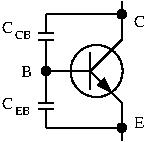AMP I.12 – The Common Gate Amplifier
Introduction The last of the JFET classical amplifier configuration is the common gate amplifier, analogous to the common base BJT amplifier. As usual, we will derive the voltage gain, current gain, input resistance, and output resistance of this configuration. The Common Gate Amplifier For the common gate amplifier, the input signal is applied at the … Read more








